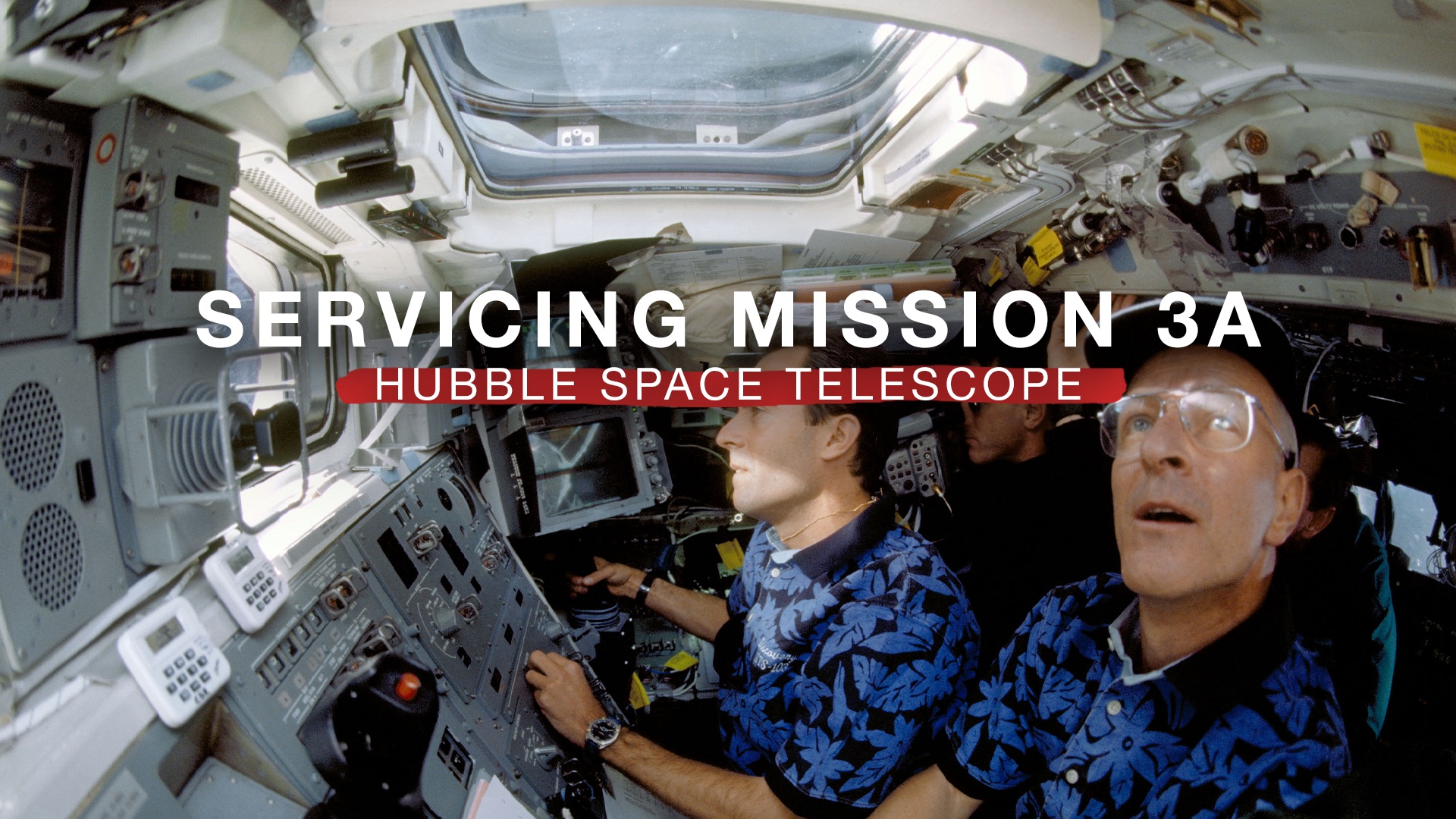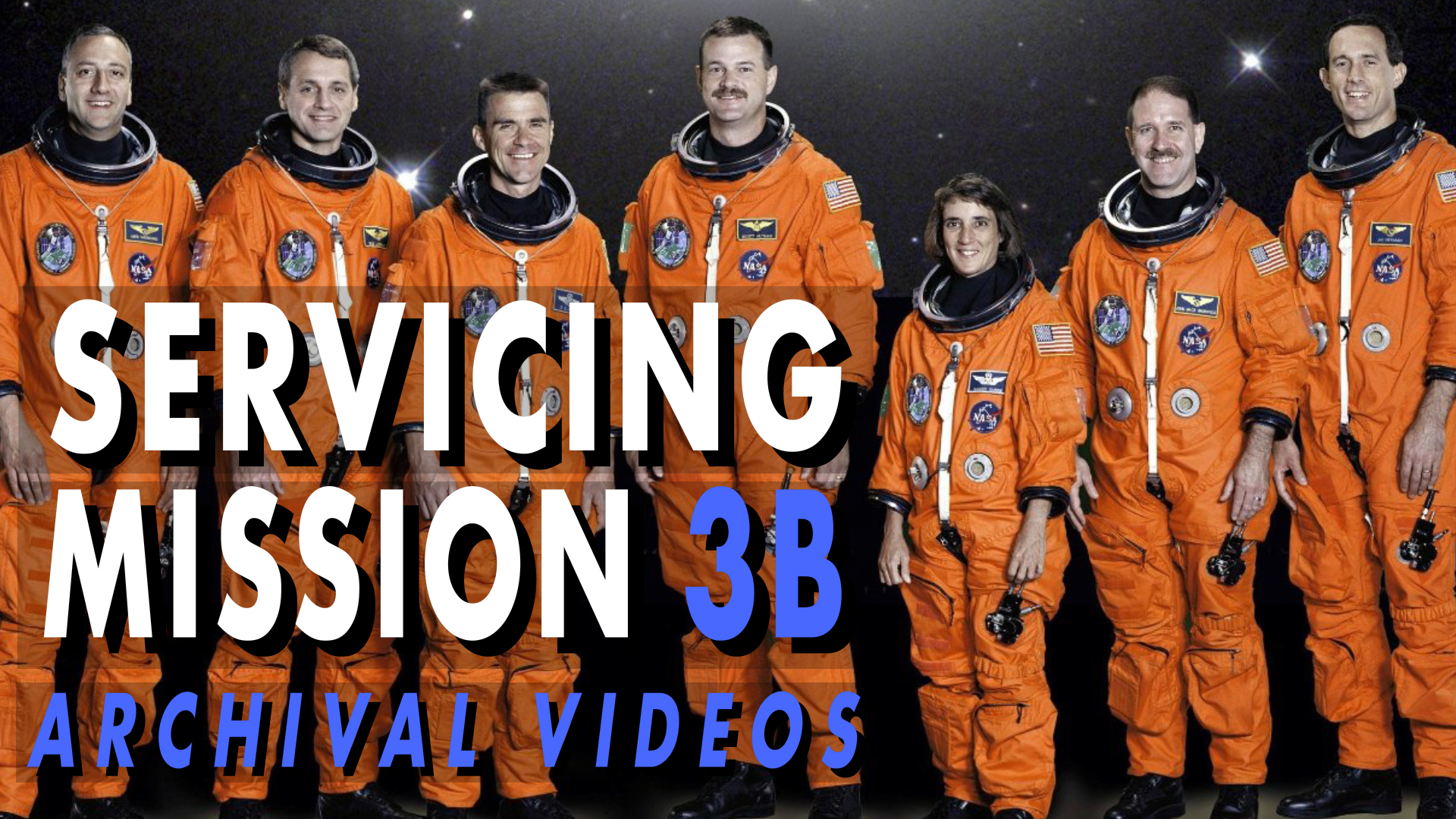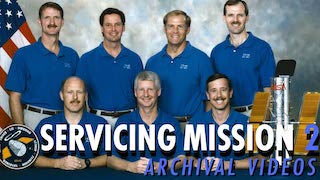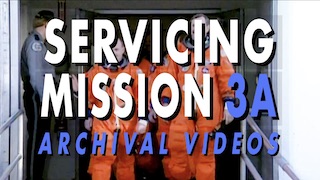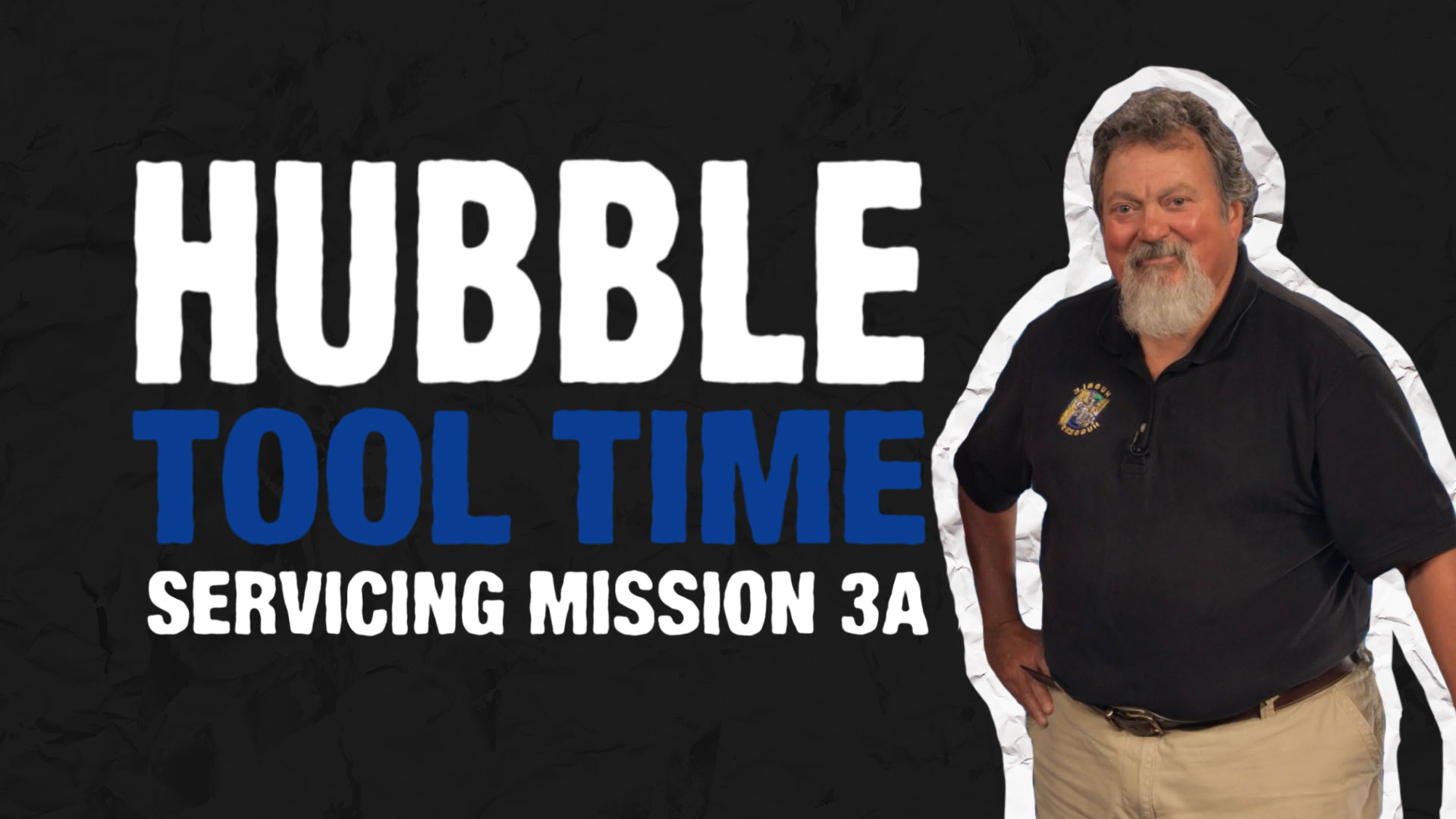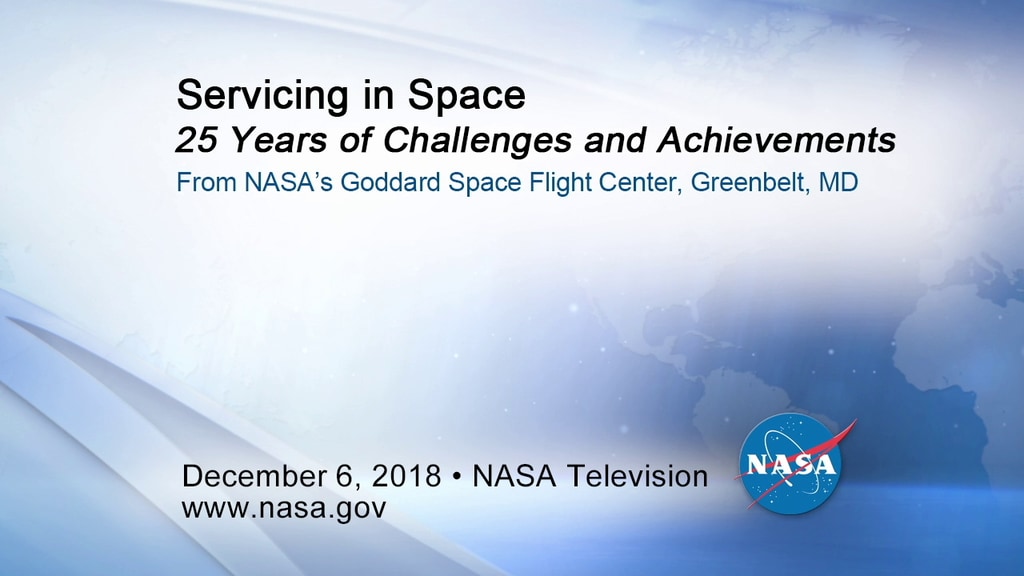Hubble Archive - Servicing Mission 3A, STS-103
Hubble's third servicing mission, Servicing Mission 3A, launched on December 19, 1999 on Space Shuttle Discovery as part of the STS-103 mission.
What was originally conceived as a mission of preventive maintenance turned more urgent on November 13, 1999, when the fourth of six gyros failed and Hubble temporarily closed its eyes on the universe. Unable to conduct science without three working gyros, Hubble entered a state of dormancy called safe mode. Essentially, Hubble "went to sleep" while it waited for help.
NASA decided to split the Third Servicing Mission (SM3) into two parts, SM3A and SM3B, after the third of Hubble's six gyroscopes failed. In accordance with NASA's flight rules, a "call-up" mission was quickly approved and developed and executed in a record 7 months.
The Hubble team left the telescope far more fit and capable than ever before. The new, improved, and upgraded equipment included six fresh gyroscopes, six battery voltage/temperature improvement kits, a faster, more powerful, main computer, a next-generation solid state data recorder, a new transmitter, an enhanced fine guidance sensor, and new insulation.

Servicing Mission 3A (SM3A) Highlight Reel
A seven-member crew restored the Hubble Space Telescope to working order and upgraded some of its systems, (3 EVAS) allowing the decade-old observatory to get ready to begin its second scheduled decade of astronomical observations. This short video shows some of the mission's most important moments.
STS-103 Flight Day Highlights Days 1-4, Dec 19-22, 1999
0:00:00 - Flight Day 1, Dec 19, 1999 crew suiting up pre-launch
0:12:00 - Launch of Space Shuttle Discovery
0:15:01 - Opening the shuttle cargo bay
0:16:29 - Flight Day 2, Dec 20, 1999 wakeup song “Taking care of business,” followed by payload bay survey
0:21:55 - Crew answers interview questions
0:33:48 - Flight Day 3, Dec 21, 1999 wakeup song “Rendezvous,” followed by Discovery prepping for Hubble rendezvous
0:36:10 - Orbital burn
0:37:00 - Approaching Hubble
0:39:00 - Hubble captured and close ups of Hubble
0:45:00 - Flight Day 4, Dec 22, 1999. Steve Smith and John Grunsfeld EVA 1 which replaced Hubble's three Rate Sensor Units (RSUs), each containing two gyros. They also installed Voltage/Temperature Improvement Kits (VIKs) on Hubble's six batteries.
STS-103 Flight Day Highlights Days 5-8, Dec 23-26, 1999
0:00:00 - Flight Day 5, Dec 23, 1999. Michael Foale and Claude Nicollier EVA 2 (Replaced the telescope's central computer and a Fine Guidance Sensor (FGS). The old computer and fine guidance sensor are now stowed in the orbital replacement carrier for return to Earth.)
0:19:12 - Flight Day 6, Dec 24, 1999. Steve Smith and John Grunsfeld EVA 3 (Installed a transmitter and a solid state recorder (SSR))
0:37:19 - John Grunsfeld talking within his spacesuit about the spacesuit
0:39:40 - Santa Claus in space
0:41:37 - Flight Day 7, Dec 25, 1999 wakeup song “I’ll be home for Christmas,” followed by crew conducting video and photo documentation from inside the shuttle
0:45:30 - Releasing Hubble and separation maneuvers
0:51:05 - Christmas messages from crew
0:53:12 - Crew answers interview questions (in Santa hats)
0:56:35 - Flight Day 8, Dec 26, 1999 wakeup song “We’re So Good Together”
0:58:30 - Crew answers interview questions
1:06:02 - Discovery’s thrusters firing to adjust altitude
1:07:23 - Planning for next day’s landing
STS-103 Post Flight Presentation
0:00:00 - Debrief of liftoff
0:02:50 - Debrief of working on Hubble
0:11:30 - Debrief of time in space after mission
0:13:10 - Debrief of landing

SM3A Crew Training In VR Lab and NBL
Field video of STS-103 crew members during Extravehicular Activity (EVA) training in the Guidance Navigation Simulator as well as Virtual Reality Lab Training followed by footage of the crew training in the Neutral Buoyancy Laboratory (NBL).
SM3A Crew Training In NBL
Field video of STS-103 crew members John Grunsfeld, Jean-Francois Clervoy (ESA), Steven Smith, and Claude Nicollier (ESA) during Extravehicular Activity (EVA) training at the Neutral Buoyancy Laboratory (NBL).
Underwater Footage of SM3A Crew Training In NBL
Field video of STS-103 crew members training underwater at the Neutral Buoyancy Laboratory (NBL).
SM3A Crew Training and Posing for Photograph
Field video of STS-103 crew members posing for official crew photo, followed by crew practicing emergency egress from Shuttle, followed by Extravehicular Activity (EVA) training in the Guidance Navigation Simulator as well as Virtual Reality Lab Training followed by footage of the crew training in the Neutral Buoyancy Laboratory (NBL).
SM3A Resource Reel
This video shows B-roll of astronauts in the clean room prepping for SM3A. As well as source footage from earlier servicing missions as well. Also shows some animations of some of Hubble's scientific findings up to now.

November 09, 1999 Mission Overview Media Briefing
0:00:40 - Briefing on STS-103 featuring Linda Ham, Keith Johnson,
0:10:00 - Animations of change outs and Hubble updates
0:14:16 - EVA 1 Overview
0:15:30 - EVA 2 Overview
0:18:20 - EVA 3 Overview
0:22:00 - Going over equipment and tools
0:28:35 - Questions from the media
November 09, 1999 SM3A Science Media Briefing
0:00:00 - Animations of Hubble Servicing
0:01:10 - Clean room footage
0:01:30 - Animations of Hubble Servicing
0:02:14 - General training for Servicing
0:02:45 - Hubble images
0:03:50 - STS-103 Science Briefing
0:34:50 - Media Questions
STS-103 Countdown and Pre-Launch Briefing (December 14)
0:00:00 - Countdown status briefing with media
0:10:00 - Media questions
0:18:30 - Shots of Space Shuttle ready to launch
0:21:00 - Pre-Launch briefing
0:30:40 - Media questions
0:41:07 - Leckrone statement
0:42:00 Media questions
1:15:44 - Shots of Space Shuttle ready to launch
STS-103 Countdown and Pre-Launch Briefing (December 15)
0:00:00 Countdown status briefing with media
0:09:29 - Media questions
0:15:40 - Shots of Space Shuttle ready to launch
0:16:45 - STS-103 science briefing
0:48:33 - Media questions
1:14:00 - Shots of Space Shuttle ready to launch
Credits
Please give credit for this item to:
NASA's Goddard Space Flight Center
-
Producer
- Paul R. Morris (USRA)
-
Technical support
- Aaron E. Lepsch (ADNET Systems, Inc.)
Release date
This page was originally published on Thursday, December 19, 2019.
This page was last updated on Wednesday, May 3, 2023 at 1:45 PM EDT.
